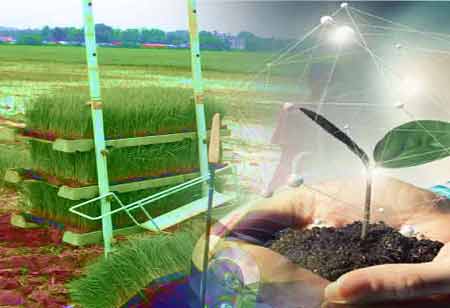Thank you for Subscribing to Agri Business Review Weekly Brief
Trends Redefining Precision Agriculture in the Coming Years Vertical: Precision Farming 2023
Agricultural technological advancements assist farmers in meeting ever-increasing demand through low-cost and efficient methods.

By
Agri Business Review | Tuesday, January 03, 2023
Stay ahead of the industry with exclusive feature stories on the top companies, expert insights and the latest news delivered straight to your inbox. Subscribe today.
New trends in precision agriculture are bringing innovative solutions to the agriculture sector to improve productivity, sustainability, and efficiency.
FREMONT, CA: Agricultural technological advancements assist farmers in meeting ever-increasing demand through low-cost and efficient methods. Precision agriculture is redefining the industry with its management method based on measuring, responding to, and observing the variability of crops, livestock, and fields. Today, precision agriculture trends allow farmers to collect real-time data on crop fields and, among other things, increase product quality.
Satellite Technology
Variability and data quality are the primary challenges preventing the further implementation of sustainable agriculture practices. Satellite technology in agriculture enables farmers to analyse large areas of their farms in a short period and in real-time. In addition, it facilitates farmers' ability to react immediately to localised issues such as fertilisation and irrigation. New technologies enable farmers to determine the topography, heterogeneity, and yield estimation of crops and livestock through tracking.
Internet of Things (IoT)
Data collection is becoming a vital part of agricultural practices. Farmers seek IoT solutions to decide the type of pesticides and fertilisers that should be used for optimal efficiency, monitoring weather conditions, taking control of production processes, and lowering production risks. The use of IoT sensors helps farmers optimise every aspect of their work, including crop farming and tracking cattle. Moreover, the live monitoring of the field data enables farmers to make the best decisions on upcoming production while reducing their environmental impact.
Artificial Intelligence (AI)
AI enhances the data collected from various sensors to facilitate precision agriculture and improve harvest quality and accuracy. It also makes different aspects of Agtech operations smarter. For example, water management and energy consumption are optimised with AI, leading to more accurate decisions taken by farmers. Machine learning and deep learning techniques are emerging as integral parts of agriculture and are used in soil and crop monitoring, and agricultural robotics.
Variable Rate Technology (VRT)
A reliable method of boosting productivity is the use of variable rate technology in precision agriculture. VRT enables the application of water, nutrients, and other production factors at varying rates across a field. This removes the need to make multiple runs across an area or constantly change rate settings on machinery. VRT also eliminates the time-consuming agricultural tasks that are done manually while reducing human error chances. Therefore, VRT helps farmers boost productivity, increase precision, and improve risk management. Some examples of VRT are fertigation systems, precision pest management, variable rate application, and precision sprayers.
These trends in precision agriculture bring innovative solutions to the agriculture sector to improve productivity, sustainability, and efficiency. The development of satellite and 3D mapping solutions transforms agriculture by making farmers react immediately to possible negative changes in farms and cattle. On the other hand, environmental protection is becoming a priority for them as they use emission reduction solutions to limit carbon emissions into the atmosphere while also improving soil quality.





